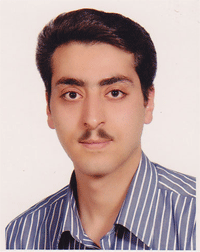Hodaei Mohammad Reza
Experimental Study on Curved Water-Wave Absorber in Towing Tanks
| Student Name |
|
||
| Supervisors |
Mohammad Reza Chamani Shahriar Mansourzadeh |
||
| Date | 2011-03-12 | ||
| Keywords |
Wave Wave Maker Wave Absorber Towing Tank Wave Probe Wave Steepness Reflection Coefficient Curved Model |
Abstract
Wave absorber is a structure that dissipates incident wave energy and minimizes the reflected wave height. In this study, reflection characteristics of curved water-wave absorber with regular waves are investigated in the Hydrodynamic Laboratory of Subsea Research & Development Center (SRDC) at Isfahan University of Technology (IUT). Due to limited experimental studies on this form of wave absorber and also recommendation of Ouellet and Datta (1986), experimental study on this type of wave absorber has been conducted. The waves are generated with a plunger type wave maker in deep water condition. Characteristics of waves generated are obtained using wave probes and Data Acquisition System (DAS). Resistive type wave probes are employed to record wave profile. The wave probes are calibrated statically and dynamically. To verify results obtained by wave probes and the transducers, rulers and camera systems are also used. A galvanized perforated plate with porosity of about 42.3% and equation of y = x2 as the base model have been used. The base model is rotated counterclockwise (5, 10, 15, 20, 25, and 35 degrees) and clockwise (5, and 10 degrees) to reproduce different models with different equations; e.g., T0 represents the base model (y = x2) and T5 & –T5 representative five degree rotation of the base model in counterclockwise and clockwise directions, respectively. The base model and other rotated models for various submergence depths are tested. Three models (-T10, T0 and T25) are tested at submerged depth of 0.12 m, whereas T25, T0 models are tested at submerged depth of 0.36 m. All models are also tested at submerged depth of 0.24 m. Wave reflection coefficient, Cr, (the ratio of reflected wave height to incident wave height) is calculated using Goda and Suzuki’s method (1976). To verify Goda and Suzuki’s method, the reflection coefficient of the back wall are obtained. Wave steepness parameter (incident wave height to wavelength ratio) S0, is an important parameter to reach reflection coefficient of unity for the back wall, and range of this parameter was less or equal to 0.04. Variation of reflection coefficient versus deep water wave steepness parameter for wide range of curved profiles and different equations is developed. Results are also presented based on the variation of reflection coefficient versus the relative submergence depth (the ratio of submerged depth to total vertical height of curved profile), s/h, and the relative length parameter (the ratio of horizontal length to vertical height of curved profile) for different wave frequencies. Results showed lower reflection coefficient are occurred in -T10 model, at lower range of wave steepness compared to that of T0 model (base model) in submerged depth of 0.12 m. By doubling and tripling the submergence depth, lower reflection coefficient is obtained in T25 model, at lower wave steepness, with respect to T0. The results are also showed that with increasing the angle of the rotation in the counterclockwise mode for submergence depth of about 0.24 m, the hydraulic performance of the model (lower reflection coefficient) improves. It is concluded that among clockwise rotations of the model (-T10 & -T5), the -T5 model exhibits improved condition (lower reflection coefficient) compared to that of the base model (T0) for incident wave steepness ranging from 0.016 – 0.0665 at submerged depth of 0.24 m. Results are compared with the results of numerical solution of the curved model (.y = x2) presented by Jing and Sheng (1989). Variation of Cr2 versus ν (2/g) is presented, where is angular frequency. The results of the base model are in good agreement compared to the results of the numerical model.
| © Mohammad Reza Chamani Homepage | Civil Engineering Department |

